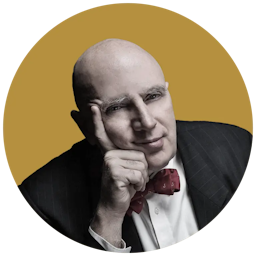Touring America, Via Jazz Tunes
This article is from the archive of The New York Sun before the launch of its new website in 2022. The Sun has neither altered nor updated such articles but will seek to correct any errors, mis-categorizations or other problems introduced during transfer.

If Nelson Riddle (1921-85) were alive, it would surely make his day to hear his name mentioned in the same breath as George Gershwin and Duke Ellington, who were his idols. It would also please him to believe that his most ambitious extended composition, “Cross Country Suite,” merits comparison with Gershwin’s “Rhapsody in Blue” and Ellington’s “Black, Brown, and Beige.”
Recorded in 1958 and recently reissued, Riddle’s “Cross Country Suite” employs pop, jazz, and a wide variety of classical music. Some of it suggests movie music, other parts cry out for choreography. It is a suite made up of 11 movements, but it’s also a concerto — in that all the pieces spotlight a single soloist: the virtuoso clarinetist Buddy DeFranco, from beginning to end.
Mr. DeFranco, who first worked with Riddle in the Tommy Dorsey Orchestra a decade earlier, recalls in the notes to the new CD edition that the work was conceived as a showpiece to be performed in the many clinics and demonstrations he was giving in the early 1950s. In the course of a year — during which Riddle was, as usual, orchestrating the Great American Songbook for his two star clients, Frank Sinatra and Nat King Cole — the suite for clarinet evolved into full-length form. The 11 movements are all between two and five minutes, and they have the same chamber orchestra format heard on most of the classic Sinatra concept albums: a full jazz big band, plus classical strings and winds. In total, there were 36 pieces, but unfortunately, the new edition does not provide information on personnel or even the recording date.
Just as Riddle was the perfect composer for the project, Mr. DeFranco was the perfect soloist. He is invariably heralded as the first — and quite possibly the last, as well as the greatest — clarinetist to work in the bebop idiom. But it would be better to distinguish him as the player who best realized the goal (attempted by Benny Goodman and Artie Shaw) of finding a middle ground between jazz and classical approaches to the instrument. Mr. DeFranco was never a hot and lusty player, such as Pee Wee Russell, who might have had technique but didn’t care to show it off. Mr. DeFranco’s focus, like a classical player, is to interpret the written music as faithfully and perfectly as possible. His own voice is a by-product of the performance, rather than being an end in itself.
The underlying idea of “Cross Country Suite” is a depiction of the various regions of America in musical form. Mr. DeFranco doesn’t tell us how that concept was conceived; however, it is clear that this is the urban and natural geography of the nation as viewed from the back of a band bus. Riddle starts with “Tall Timber,” which doesn’t suggest the big trees themselves so much as a locomotive chug-chugging through the California Redwoods. The use of a train rhythm gets things moving: There’s nothing like a locomotive motif to spark the notion of travel.
The suite flows from movement to movement from the West Coast steadily eastward (“The Rockies”), past “The Mississippi” to the great cities (“The Metropolis”), but even in the second half, there’s an out-of-sequence stop in “El Camino Real.” The trip concludes back in Texas with “Longhorn.”
The idea that this was originally written for school performances possibly explains why some of the work feels inspired by other composers. There’s nothing specifically derivative, but various styles are referenced. In “The Metropolis,” the jaunty use of brass to suggest taxi horns sound as if Riddle were creating a companion to “American in Paris.” “El Camino Real” has an undulating rhythm behind it that could be a jazzier take on Ravel’s “Bolero.” Several pieces seem inspired by Aaron Copland: “Smoky Mountain Country” begins with a folksy guitar and instead of a harmonica or a cowboy voice. Mr. DeFranco approximates both at the same time with his dry, plaintive tone. Likewise, in the opening of “Mississippi,” the concert setting includes the bass notes of a piano while Riddle uses a harmonica to state the melody and contrast with Mr. DeFranco.
Other movements are more jazzy. “The Great Lakes” is essentially a riff that incorporates a classical fugue and bop at the same time. The music is passed along call-and-response style between Mr. DeFranco and the ensemble, and from section to section. “Down East,” which is primarily clarinet and violins, suggests the Boston Conservatory. “Longhorn” has the musicians chanting Riddle’s own lyrics in testimony to Texas. It reminded me of a Broadway musical, but according to Mr. DeFranco, the inspiration was Tommy Dorsey’s series of band-chanting numbers like “Marie,” while the hand claps are a nod to “Deep in the Heart of Texas.”
The current reissue of “Cross Country Suite” (available from nelsonriddlemusic.com) is the first compact disc edition of this work. It is also a family affair: Produced by Riddle’s daughter Rosemary Acerra, it contains photographs of scenic American vistas by Riddle’s grandson Michael Acerra. It was engineered by Doug Schwartz, the son of Riddle’s longtime woodwind player Wilbur Schwartz.
Riddle never again wrote a full-length concert work like this. His genius was in spotlighting a single voice; on “Cross Country Suite” he proved that he could bring out the voice of an instrument (and with his own original melodies) as he could for a vocalist singing classic songs.
Nelson Riddle was a brilliant man, but sometimes there’s a greater intelligence in not knowing things: Riddle apparently didn’t know the difference between pop music and art — or, if he did, he was smart enough to ignore it.
wfriedwald.com@nysun.com

